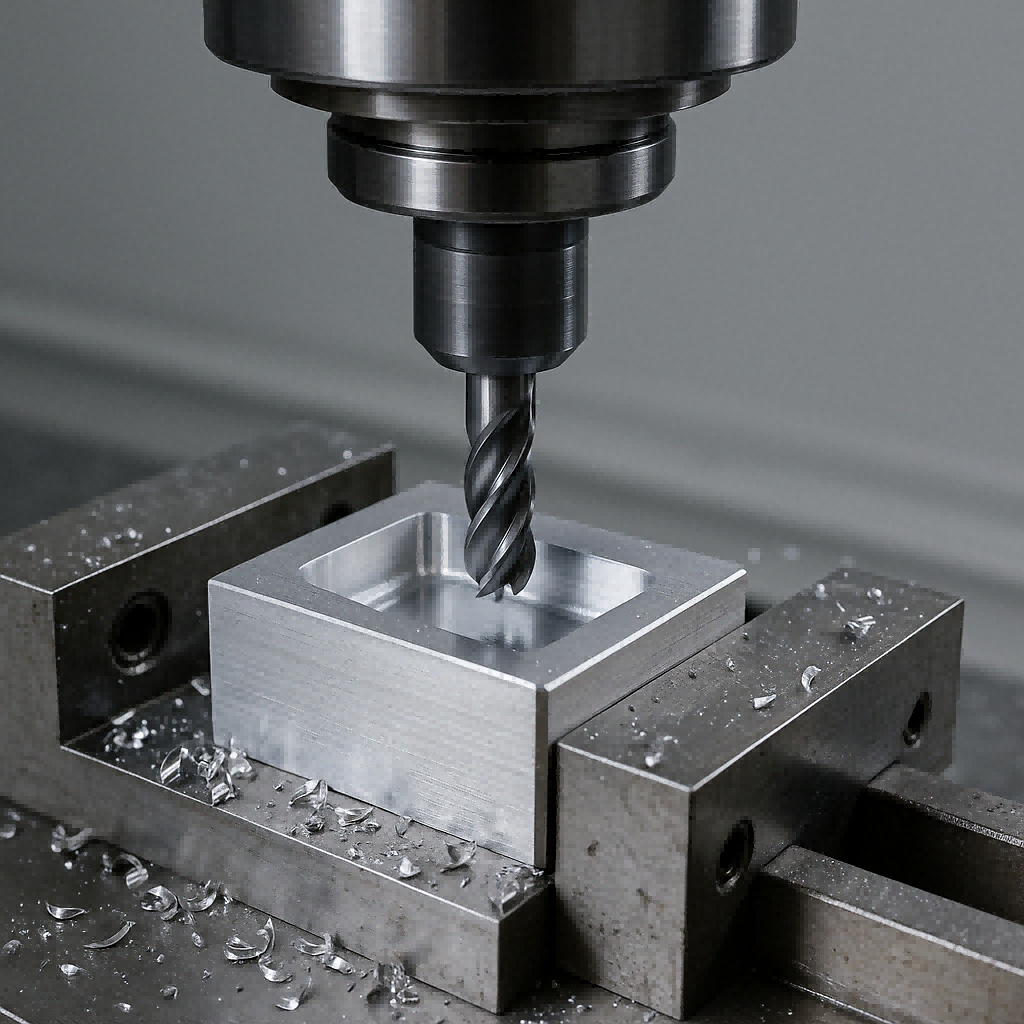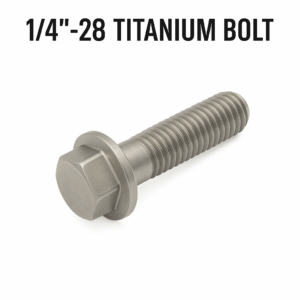What Is Waterjet Cutting?
Waterjet cutting is a modern manufacturing process that uses high-pressure streams of water—sometimes mixed with abrasive particles—to slice through a wide variety of materials, from metals to plastics.
Unlike thermal cutting methods such as lasers or plasma, waterjet cutting works without heat, meaning there’s no heat-affected zone (HAZ) or risk of material warping.
The system works by pressurizing water—often exceeding 60,000 psi (4,000 bar)—and ejecting it through a fine nozzle. When combined with abrasive particles such as garnet, the resulting jet can cut through materials up to several inches thick with extraordinary accuracy, reaching tolerances as fine as 0.001 inches (0.025 mm).
Thanks to its cold-cutting nature and computer-controlled precision, waterjet cutting has become a preferred method in industries such as aerospace, automotive, electronics, and metal fabrication, allowing engineers to create complex geometries quickly and efficiently.
Types of Waterjet Cutting
KingsMG provides a wide range of waterjet cutting technologies, each tailored for specific applications and materials.
1. Abrasive Waterjet Cutting
This is the most common form, where pressurized water is mixed with abrasive grains (like garnet).
It can easily cut hard or thick materials such as stainless steel, titanium, and ceramics—without generating heat or altering the material’s properties.
The result is a clean, burr-free edge, eliminating the need for secondary finishing operations.
2. Pure Waterjet Cutting
This method uses only water, without abrasives. It’s ideal for softer or delicate materials like rubber, foam, plastics, and textiles.
Because no abrasives are used, there’s zero contamination risk—making it perfect for food processing and medical applications.
3. Robotic Waterjet Cutting
In this setup, a robotic arm manipulates the cutting head, offering flexibility for 3D shapes and complex contours.
It’s highly efficient, reduces manual labor, and ensures consistent quality—ideal for the automotive and aerospace sectors where complex geometries are common.
4. Micro Waterjet Cutting
Micro waterjet cutting uses a fine jet stream for miniature or intricate parts with precision up to 0.02 inches (0.5 mm).
Common in the electronics and medical industries, it allows the production of small, delicate components without mechanical stress or damage.
5. Dynamic Waterjet Cutting
Dynamic systems feature 5-axis control and operate at pressures up to 6,000 bar (87,000 psi).
They compensate automatically for stream lag and taper, resulting in ultra-precise cuts—ideal for thick metals and high-tolerance parts in industrial manufacturing.
6. Submerged Waterjet Cutting
Here, the cutting occurs underwater, which reduces noise, splash, and dust.
This technique minimizes deformation, requires less workspace, and is excellent for cutting concrete, stone, and other dense materials.
7. 3D Waterjet Cutting
An advanced variant of abrasive waterjet technology, 3D cutting enables full 3-dimensional manipulation.
Using multi-axis control, it can create complex, contoured shapes with exceptional surface finish—making it a valuable tool for custom or artistic fabrication.
Advantages of Waterjet Cutting
1. Exceptional Precision
Waterjet systems deliver high-precision cutting with tolerances as tight as ±0.03 inches.
Unlike saws or plasma, the process imposes minimal mechanical force, preserving material integrity and reducing stress fractures.
2. No Heat-Affected Zone
Because waterjet cutting is a cold process, materials are never exposed to high temperatures.
This means no warping, melting, or structural distortion, making it ideal for temperature-sensitive materials such as aluminum, composites, or plastics.
3. Broad Material Compatibility
From soft rubber and foam to hardened steel and titanium, waterjets can cut virtually any material.
The ability to switch between pure and abrasive jets makes it one of the most versatile cutting technologies available today.
4. Environmentally Friendly
Waterjet cutting produces no toxic fumes, dust, or hazardous waste.
Most water and abrasives can be recycled, and energy consumption is significantly lower than that of thermal cutting systems—making it a sustainable manufacturing solution.
5. Minimal Material Waste
Waterjets can nest multiple parts tightly on a single sheet, maximizing material utilization and reducing waste by up to 30% compared with mechanical cutting methods.
6. No Warping or Distortion
With no heat input and precisely controlled pressure, even thin materials remain perfectly flat—eliminating rework and ensuring consistent quality.
7. Cost-Efficient and Automated
Modern KingsMG waterjet systems are CNC-controlled, minimizing human error and labor costs.
Automation ensures high throughput, excellent repeatability, and low maintenance downtime.
8. Safe Operation
Waterjet machines are enclosed and automated, reducing operator risk from debris or high temperatures.
This makes them safer than laser or plasma cutters, especially for large-scale industrial production.
Industrial Applications of Waterjet Cutting
Waterjet cutting plays an essential role across numerous sectors due to its accuracy, versatility, and cleanliness.
Aerospace and Automotive
Aerospace and automotive engineers rely on waterjets to create lightweight, high-strength components from aluminum, titanium, and composite materials.
The cold cutting process prevents thermal damage, ensuring precise and reliable parts for critical assemblies.
Metal Fabrication
From sheet metal components to molds and tooling, waterjet cutting allows complex geometries and tight tolerances.
It shortens production time from days to hours, reduces rework, and minimizes material waste.
Glass and Stone Cutting
Waterjets can precisely cut glass, marble, and granite into decorative or structural shapes without cracking or burning.
This ability makes them invaluable in architecture, interior design, and construction.
Electronics and Semiconductor Manufacturing
The non-thermal precision of micro waterjet cutting is perfect for semiconductors, circuit boards, and sensors, where tolerances can be as tight as 0.1 mm (0.004 inches).
Foam and Rubber
Because no heat is involved, foam and rubber materials can be cut cleanly without distortion—ideal for packaging, gaskets, and sealing products.
Comparing Waterjet Cutting with Other Methods
| Cutting Method | Material Thickness | Precision | Speed | Limitations |
|---|---|---|---|---|
| Laser Cutting | Up to 6 mm (0.25 in) | High | Fast | Heat distortion on thick parts |
| Plasma Cutting | Up to 50 mm (2 in) | Medium | Very Fast | Produces HAZ and potential warping |
| Mechanical Cutting | Varies | Low–Medium | Slow | Tool wear, internal stress |
| Waterjet Cutting | Up to several inches | High | Moderate | Slightly slower but cleaner, no heat |
In comparison, waterjet cutting delivers the best balance between precision, flexibility, and material integrity—making it a superior choice for both prototypes and production runs.
Choosing the Right Waterjet Cutter for Your Business
When selecting a waterjet cutting system, KingsMG recommends considering the following factors:
-
Material Type and Thickness: Determine whether you need pure or abrasive jets based on the hardness of materials.
-
Cutting Speed and Accuracy: Match the machine’s specifications to your production requirements.
-
Operating Costs and Maintenance: Look for low-maintenance systems with efficient abrasive recycling and low power usage.
-
Software Integration: Ensure compatibility with CAD/CAM systems for seamless operation.
-
Size and Capacity: Evaluate the maximum cutting area and nozzle count for your production scale.
-
Support and Training: KingsMG provides comprehensive technical support and training to keep your operations running smoothly.
Maintenance and Troubleshooting Tips
Proper maintenance ensures that your KingsMG waterjet cutter continues to perform at peak levels.
-
Follow a Routine Schedule: Replace filters, check seals, and flush the cooling system regularly.
-
Monitor Water Quality: Use clean, low-impurity water to prevent nozzle wear or blockages.
-
Check Abrasive Levels: Balance feed rates for optimal cutting performance.
-
Inspect Hoses and Seals: Regularly check for leaks or wear in high-pressure components.
-
Troubleshoot Common Issues: Watch for pressure drops or clogging—often signs of worn parts or contaminated abrasives.
By adhering to these maintenance practices, downtime is minimized, and cutting accuracy remains consistently high.
Conclusion
Waterjet cutting represents the future of precision manufacturing—a clean, versatile, and cost-efficient technology that meets the needs of modern industries.
From aerospace engineering to architectural design, KingsMG’s advanced waterjet solutions deliver unmatched precision, smooth edges, and minimal waste, helping manufacturers achieve superior quality with lower production costs.
When precision and performance matter most—trust KingsMG to bring your designs to life through cutting-edge waterjet technology.






